Conclusion on the Vivo Pad 5 Pro
With comparable features, the Vivo Pad 5 Pro costs just over half as much as the iPad Air 13 when imported, and is even significantly cheaper in China.
Nevertheless, our test device has nothing to hide: first of all, there are the significantly longer runtimes with a slightly lighter and slimmer case. It is also sturdy and stylish, with fast Wi-Fi and a bright screen that offers good color reproduction.
In terms of performance, the Vivo Pad 5 Pro makes a few compromises, but these are only noticeable during extremely demanding tasks.
Thanks to minimal heat buildup, good speakers, and clean system software that supports many languages, it stands as a worthy and reasonably priced competitor to the iPad Air.
The only downsides are the need to import the device from China — a process made easier through our rental partner Trading Shenzhen — and the uncertain software support.
Pros
Cons
Price and availability
At our rental provider tradingshenzhen.com, the version with 16 GB RAM and 512 GB mass storage costs just over 700 euros.
However, with 8GB RAM and 256GB mass storage, the tablet is also available for less than 570 euros.
A global launch of the tablet has not been confirmed.
Table of Contents
- Conclusion on the Vivo Pad 5 Pro
- Specifications
- Housing and features – Sturdy metal case on the Vivo Pad 5 Pro
- Communication and operation - WiFi 6 for fast Internet
- Software and sustainability - Designed for multitasking
- Cameras - Very high quality for a tablet
- Display - Bright and PWM-free
- Performance, emissions and battery life - plenty of power on board
- Notebookcheck overall rating
- Possible alternatives compared
Specifications
Housing and features – Sturdy metal case on the Vivo Pad 5 Pro
The tablet comes with a high-quality metal case in rosé, light blue, or gray. Despite its size, it is relatively sturdy — only the corners show slight flex under pressure.
Weighing 578 grams, it is quite light, and at 5.9 millimetres thick, it is also slightly slimmer than Apple's iPad Air 13.
Our model includes 16 GB RAM and 512 GB mass storage; variants with 256 GB storage and 8 or 12 GB RAM are also available. However, the Vivo Pad 5 Pro does not support mobile networks or satellite positioning.
Communication and operation - WiFi 6 for fast Internet
You have to make do with Wi-Fi 6, so the little-used 6 GHz band is not available on our Chinese model. Nevertheless, speeds are comparable to the competition, with the tablet only slightly slower when uploading.
The touchscreen is highly responsive and can also be used with a stylus if desired. A keyboard cover is available as an optional accessory.
There is no fingerprint sensor, but facial recognition is supported. It works reliably, though it uses only 2D recognition, which offers lower security.
| Networking | |
| Vivo Pad 5 Pro | |
| iperf3 transmit AXE11000 | |
| iperf3 receive AXE11000 | |
| Oppo Pad 4 Pro | |
| iperf3 transmit AXE11000 | |
| iperf3 receive AXE11000 | |
| Samsung Galaxy Tab S10 FE+ | |
| iperf3 transmit AXE11000 | |
| iperf3 receive AXE11000 | |
| Huawei MatePad Pro 13.2 (2025) | |
| iperf3 transmit AXE11000 | |
| iperf3 receive AXE11000 | |
| Apple iPad Air 13 2025 | |
| iperf3 transmit AXE11000 6GHz | |
| iperf3 receive AXE11000 6GHz | |
| Average 802.11 a/b/g/n/ac/ax | |
| iperf3 transmit AXE11000 | |
| iperf3 receive AXE11000 | |
| iperf3 transmit AXE11000 6GHz | |
| iperf3 receive AXE11000 6GHz | |
| Average of class Tablet | |
| iperf3 transmit AXE11000 | |
| iperf3 receive AXE11000 | |
| iperf3 transmit AXE11000 6GHz | |
| iperf3 receive AXE11000 6GHz | |
Software and sustainability - Designed for multitasking
OriginOS 5 HD is the name of the operating system, based on Android 15. It allows apps to run in windows or split-screen mode and includes several other features that support productive use on the tablet.
At the time of testing, the security patches were from March 2025, which is somewhat outdated. There is also no clear information on the duration of future software updates. When purchased through Trading Shenzhen, the tablet includes a one-year warranty and can be serviced via a German return address.
There are no visible sustainability efforts, as even the protective film around the tablet is made of plastic.
Cameras - Very high quality for a tablet
13 megapixels on the back and 8 megapixels on the front — these are the basic specifications of the Vivo Pad 5 Pro's camera system. As with most large tablets, the cameras are mainly intended for video calls or scanning QR codes.
Nevertheless, the main camera captures decent photos suitable for casual snapshots. It also supports 4K video recording at 30 fps, with acceptable image quality.
The front-facing camera delivers good results as well, making it suitable for occasional selfies and video conferences.
Image comparison
Choose a scene and navigate within the first image. One click changes the position on touchscreens. One click on the zoomed-in image opens the original in a new window. The first image shows the scaled photograph of the test device.
Main camera PlantMain camera NeighborhoodMain camera Low Light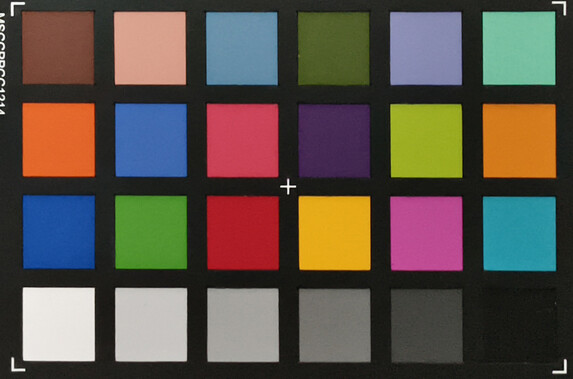

Display - Bright and PWM-free
With an average of 668 cd/m² at maximum brightness, the Vivo Pad 5 Pro's display performs well, though some competitors offer even brighter panels. On smaller areas (APL18), we measured up to 1,184 cd/m².
The resolution of 3096×2064 pixels in a 3:2 aspect ratio is well-suited for reading and working with documents. Color reproduction is also solid, with no visible blue tint and fairly accurate tones.
There is no cause for concern regarding PWM flickering at low brightness levels.
| |||||||||||||||||||||||||
Brightness Distribution: 94 %
Center on Battery: 683 cd/m²
Contrast: 1366:1 (Black: 0.5 cd/m²)
ΔE ColorChecker Calman: 1.9 | ∀{0.5-29.43 Ø4.78}
ΔE Greyscale Calman: 2.4 | ∀{0.09-98 Ø5}
99.5% sRGB (Calman 2D)
Gamma: 2.378
CCT: 6867 K
| Vivo Pad 5 Pro IPS, 3096x2064, 13" | Oppo Pad 4 Pro LTPS LCD, 3392x2400, 13.2" | Samsung Galaxy Tab S10 FE+ TFT-LCD, 2880x1800, 13.1" | Huawei MatePad Pro 13.2 (2025) Flexible OLED, 2880x1920, 13.2" | Apple iPad Air 13 2025 IPS, 2732x2048, 12.9" | |
|---|---|---|---|---|---|
| Screen | -11% | 1% | 20% | -2% | |
| Brightness middle (cd/m²) | 683 | 672 -2% | 779 14% | 795 16% | 607 -11% |
| Brightness (cd/m²) | 668 | 652 -2% | 751 12% | 791 18% | 576 -14% |
| Brightness Distribution (%) | 94 | 93 -1% | 90 -4% | 97 3% | 87 -7% |
| Black Level * (cd/m²) | 0.5 | 0.46 8% | 0.43 14% | 0.5 -0% | |
| Contrast (:1) | 1366 | 1461 7% | 1812 33% | 1214 -11% | |
| Colorchecker dE 2000 * | 1.9 | 3.18 -67% | 1.9 -0% | 1.1 42% | 1.52 20% |
| Colorchecker dE 2000 max. * | 3.42 | 4.84 -42% | 5 -46% | 2.5 27% | 3.5 -2% |
| Greyscale dE 2000 * | 2.4 | 2.2 8% | 2.7 -13% | 2.1 12% | 2.2 8% |
| Gamma | 2.378 93% | 2.396 92% | 2.2 100% | 2.23 99% | 2.197 100% |
| CCT | 6867 95% | 7070 92% | 6923 94% | 6822 95% | 6929 94% |
* ... smaller is better
Screen Flickering / PWM (Pulse-Width Modulation)
| Screen flickering / PWM not detected | |||
In comparison: 53 % of all tested devices do not use PWM to dim the display. If PWM was detected, an average of 8111 (minimum: 5 - maximum: 343500) Hz was measured. | |||
Display Response Times
| ↔ Response Time Black to White | ||
|---|---|---|
| 62.3 ms ... rise ↗ and fall ↘ combined | ↗ 11.2 ms rise | |
| ↘ 15.1 ms fall | ||
| The screen shows slow response rates in our tests and will be unsatisfactory for gamers. In comparison, all tested devices range from 0.1 (minimum) to 240 (maximum) ms. » 100 % of all devices are better. This means that the measured response time is worse than the average of all tested devices (20.2 ms). | ||
| ↔ Response Time 50% Grey to 80% Grey | ||
| 33.7 ms ... rise ↗ and fall ↘ combined | ↗ 17.5 ms rise | |
| ↘ 16.2 ms fall | ||
| The screen shows slow response rates in our tests and will be unsatisfactory for gamers. In comparison, all tested devices range from 0.165 (minimum) to 636 (maximum) ms. » 45 % of all devices are better. This means that the measured response time is similar to the average of all tested devices (31.6 ms). | ||
Performance, emissions and battery life - plenty of power on board
The MediaTek Dimensity 9400 is a high-end SoC and generally delivers strong performance. However, the Vivo Pad 5 Pro cannot quite match the Oppo Pad 4 Pro with Snapdragon 8 Elite or the Apple iPad Air 13 .
The differences are clearly reflected in benchmark results. That said, unless you use the tablet for highly demanding tasks, the performance gap is unlikely to be noticeable. In our everyday usage tests, the Vivo Pad 5 Pro handled multitasking without any issues.
Heat development is minimal and mostly concentrated at the top center, where the SoC is likely positioned. However, 3DMark stress tests show noticeable performance drops under prolonged load.
The system includes a total of 8 speakers (4 tweeters and 4 woofers), delivering good overall sound. Clarity could be improved at times, and the maximum volume is slightly limited, though sufficient for a medium-sized room. A wide range of Bluetooth audio codecs is supported for wireless audio.
Thanks to its 12010 mAh battery, the Vivo Pad 5 Pro delivers excellent battery life — nearly 19 hours in our WLAN test. This easily covers a full workday or extended leisure use. The tablet supports fast charging at up to 66 watts, allowing a full charge in under 2 hours.
| Geekbench AI | |
| Single Precision NPU 1.5 | |
| Vivo Pad 5 Pro | |
| Average Mediatek Dimensity 9400 (n=1) | |
| Average of class Tablet (166 - 5295, n=28, last 2 years) | |
| Half Precision NPU 1.5 | |
| Vivo Pad 5 Pro | |
| Average Mediatek Dimensity 9400 (n=1) | |
| Average of class Tablet (154 - 41155, n=28, last 2 years) | |
| Quantized NPU 1.5 | |
| Vivo Pad 5 Pro | |
| Average Mediatek Dimensity 9400 (n=1) | |
| Average of class Tablet (88 - 57388, n=28, last 2 years) | |
| Vivo Pad 5 Pro | Oppo Pad 4 Pro | Samsung Galaxy Tab S10 FE+ | Huawei MatePad Pro 13.2 (2025) | Average 512 GB UFS 4.1 Flash | Average of class Tablet | |
|---|---|---|---|---|---|---|
| AndroBench 3-5 | -10% | -53% | -27% | -1% | -46% | |
| Sequential Read 256KB (MB/s) | 4088.5 | 3801.54 -7% | 1686.77 -59% | 1864.54 -54% | 3720 ? -9% | 1786 ? -56% |
| Sequential Write 256KB (MB/s) | 3095.4 | 3334.62 8% | 999.78 -68% | 1441.8 -53% | 3175 ? 3% | 1334 ? -57% |
| Random Read 4KB (MB/s) | 295.8 | 297.28 1% | 228.91 -23% | 305.89 3% | 371 ? 25% | 244 ? -18% |
| Random Write 4KB (MB/s) | 562.5 | 335.89 -40% | 211.53 -62% | 533.47 -5% | 433 ? -23% | 278 ? -51% |
(±) The maximum temperature on the upper side is 44 °C / 111 F, compared to the average of 33.7 °C / 93 F, ranging from 20.7 to 53.2 °C for the class Tablet.
(±) The bottom heats up to a maximum of 44.7 °C / 112 F, compared to the average of 33.2 °C / 92 F
(+) In idle usage, the average temperature for the upper side is 26.7 °C / 80 F, compared to the device average of 30 °C / 86 F.
3DMark Steel Nomad Stress Test
| 3DMark | |
| Wild Life Stress Test Stability | |
| Huawei MatePad Pro 13.2 (2025) | |
| Samsung Galaxy Tab S10 FE+ | |
| Vivo Pad 5 Pro | |
| Oppo Pad 4 Pro | |
| Wild Life Extreme Stress Test | |
| Huawei MatePad Pro 13.2 (2025) | |
| Samsung Galaxy Tab S10 FE+ | |
| Apple iPad Air 13 2025 | |
| Oppo Pad 4 Pro | |
| Vivo Pad 5 Pro | |
| Solar Bay Stress Test Stability | |
| Apple iPad Air 13 2025 | |
| Vivo Pad 5 Pro | |
| Oppo Pad 4 Pro | |
| Steel Nomad Light Stress Test Stability | |
| Huawei MatePad Pro 13.2 (2025) | |
| Apple iPad Air 13 2025 | |
| Oppo Pad 4 Pro | |
| Vivo Pad 5 Pro | |
Vivo Pad 5 Pro audio analysis
(+) | speakers can play relatively loud (83.8 dB)
Bass 100 - 315 Hz
(±) | reduced bass - on average 7.7% lower than median
(±) | linearity of bass is average (13.4% delta to prev. frequency)
Mids 400 - 2000 Hz
(±) | higher mids - on average 5.3% higher than median
(+) | mids are linear (3.4% delta to prev. frequency)
Highs 2 - 16 kHz
(+) | balanced highs - only 3.1% away from median
(+) | highs are linear (6.5% delta to prev. frequency)
Overall 100 - 16.000 Hz
(+) | overall sound is linear (10.4% difference to median)
Compared to same class
» 8% of all tested devices in this class were better, 3% similar, 89% worse
» The best had a delta of 7%, average was 20%, worst was 129%
Compared to all devices tested
» 5% of all tested devices were better, 1% similar, 94% worse
» The best had a delta of 4%, average was 24%, worst was 134%
Huawei MatePad Pro 13.2 (2025) audio analysis
(+) | speakers can play relatively loud (88.4 dB)
Bass 100 - 315 Hz
(±) | reduced bass - on average 9.2% lower than median
(±) | linearity of bass is average (7.1% delta to prev. frequency)
Mids 400 - 2000 Hz
(+) | balanced mids - only 4.2% away from median
(+) | mids are linear (5.1% delta to prev. frequency)
Highs 2 - 16 kHz
(+) | balanced highs - only 1.5% away from median
(+) | highs are linear (2.2% delta to prev. frequency)
Overall 100 - 16.000 Hz
(+) | overall sound is linear (8.9% difference to median)
Compared to same class
» 2% of all tested devices in this class were better, 2% similar, 96% worse
» The best had a delta of 7%, average was 20%, worst was 129%
Compared to all devices tested
» 2% of all tested devices were better, 1% similar, 97% worse
» The best had a delta of 4%, average was 24%, worst was 134%
| Vivo Pad 5 Pro 12010 mAh | Oppo Pad 4 Pro 12140 mAh | Samsung Galaxy Tab S10 FE+ 10090 mAh | Huawei MatePad Pro 13.2 (2025) 5050 mAh | Apple iPad Air 13 2025 mAh | |
|---|---|---|---|---|---|
| Battery runtime | -5% | -1% | -52% | -31% | |
| WiFi v1.3 (h) | 19 | 18 -5% | 18.9 -1% | 9.2 -52% | 13.2 -31% |
| Reader / Idle (h) | 43.2 | 25.5 | |||
| H.264 (h) | 21.5 | 13.8 | |||
| Load (h) | 4.9 | 5 |
Notebookcheck overall rating
Vivo Pad 5 Pro
- 07/06/2025 v8
Florian Schmitt
Possible alternatives compared
Image | Model / Review | Price | Weight | Drive | Display |
|---|---|---|---|---|---|
| Vivo Pad 5 Pro Mediatek Dimensity 9400 ⎘ ARM Immortalis-G925 MC12 ⎘ 16 GB Memory, 512 GB | Amazon: 1. $28.90 for vivo Pad 5 Pro 13"(2025)... 2. $30.64 yixinA for vivo Pad 5 Pro 13... 3. $16.95 MIGOTODA PU Leather PC Mater... List Price: 699€ | 578 g | 512 GB UFS 4.1 Flash | 13.00" 3096x2064 286 PPI IPS | |
| Oppo Pad 4 Pro Qualcomm Snapdragon 8 Elite ⎘ Qualcomm Adreno 830 ⎘ 12 GB Memory, 256 GB | Amazon: 1. $118.57 Original OPPO Pencil 2 for O... 2. $11.90 YANMONGI 1 Pack Screen Prote... 3. $14.99 YANMONGI 2 Pack Screen Prote... List Price: 587€ | 675 g | 256 GB UFS 4.0 Flash | 13.20" 3392x2400 315 PPI LTPS LCD | |
| Samsung Galaxy Tab S10 FE+ Samsung Exynos 1580 ⎘ Samsung Xclipse 540 ⎘ 8 GB Memory, 128 GB | Amazon: 1. $485.99 SAMSUNG Galaxy Tab S10 FE+ 1... 2. $469.99 Samsung Galaxy Tab S10 FE 25... 3. $469.99 SAMSUNG Galaxy Tab S10 FE 25... List Price: 789€ | 664 g | 128 GB UFS 3.1 Flash | 13.10" 2880x1800 259 PPI TFT-LCD | |
| Huawei MatePad Pro 13.2 (2025) HiSilicon Kirin T92 ⎘ HiSilicon Maleoon 920 ⎘ 12 GB Memory, 512 GB | Amazon: 1. $35.99 nincyee Tablet Silicone Case... 2. $29.99 Case for Huawei MatePad Pro ... 3. $16.89 WUNIAK Screen Protector for ... List Price: 1199€ | 580 g | 512 GB UFS 3.1 Flash | 13.20" 2880x1920 262 PPI Flexible OLED | |
| Apple iPad Air 13 2025 Apple M3 ⎘ Apple M3 9-Core GPU ⎘ 8 GB Memory, 128 GB NVMe | Amazon: $699.00 List Price: 949€ | 616 g | 128 GB NVMe | 12.90" 2732x2048 265 PPI IPS |
Transparency
The selection of devices to be reviewed is made by our editorial team. The test sample was provided to the author as a loan by the manufacturer or retailer for the purpose of this review. The lender had no influence on this review, nor did the manufacturer receive a copy of this review before publication. There was no obligation to publish this review. As an independent media company, Notebookcheck is not subjected to the authority of manufacturers, retailers or publishers.
This is how Notebookcheck is testing
Every year, Notebookcheck independently reviews hundreds of laptops and smartphones using standardized procedures to ensure that all results are comparable. We have continuously developed our test methods for around 20 years and set industry standards in the process. In our test labs, high-quality measuring equipment is utilized by experienced technicians and editors. These tests involve a multi-stage validation process. Our complex rating system is based on hundreds of well-founded measurements and benchmarks, which maintains objectivity. Further information on our test methods can be found here.




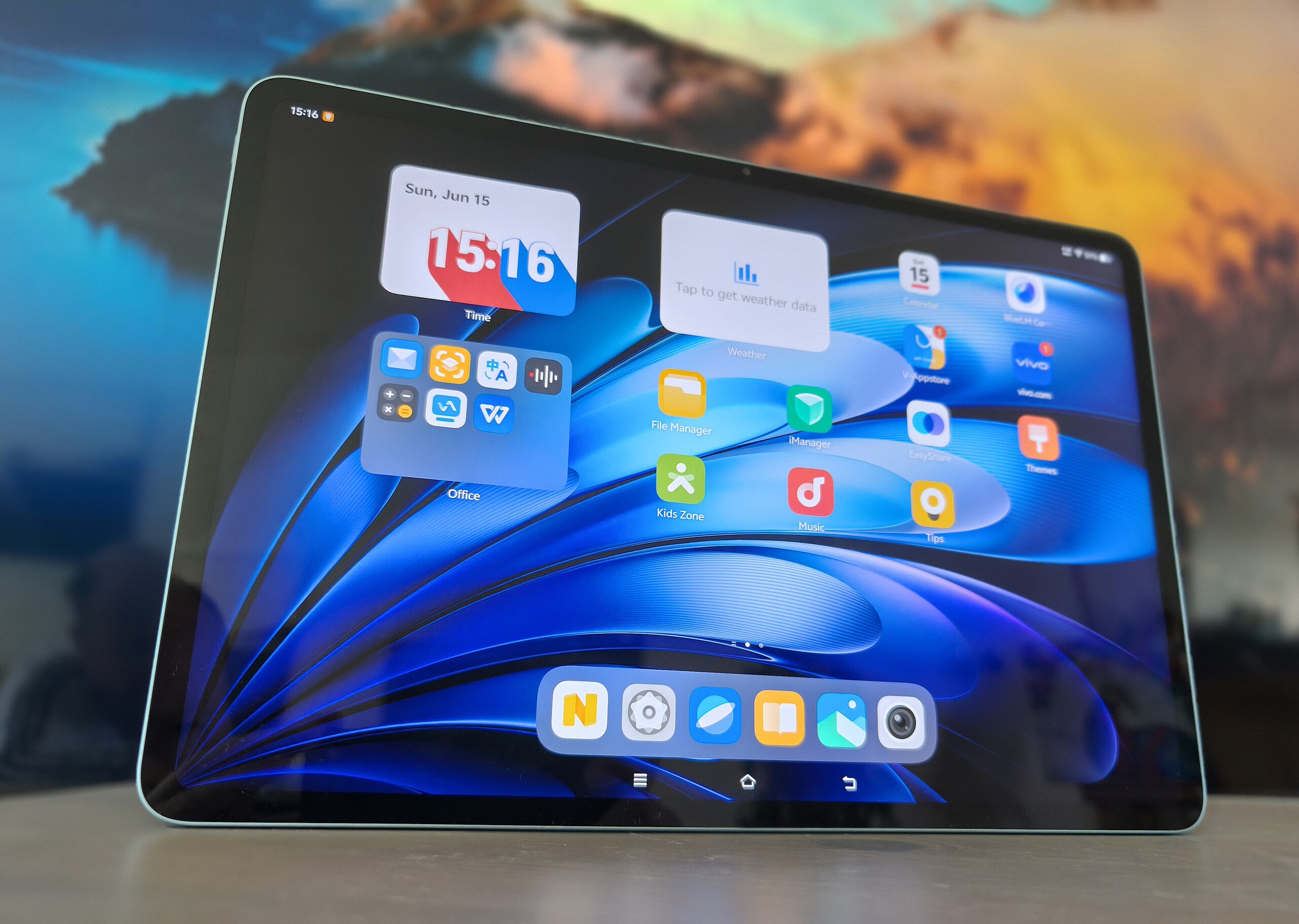

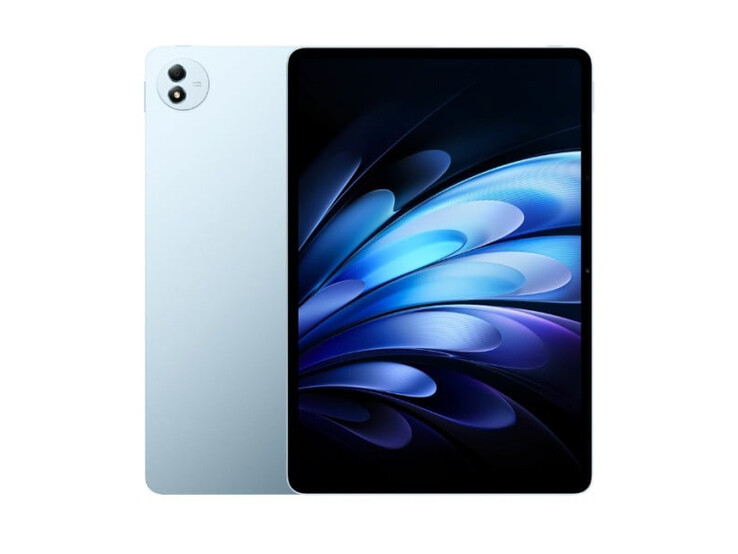












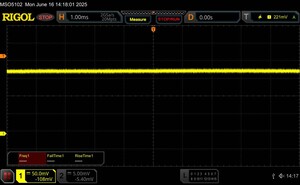
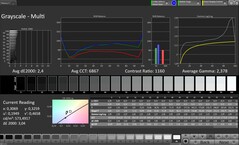
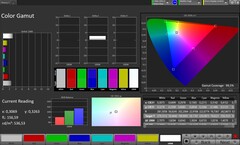
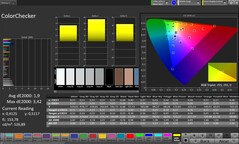
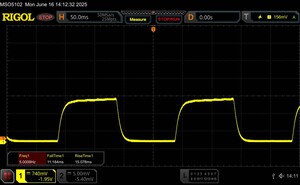
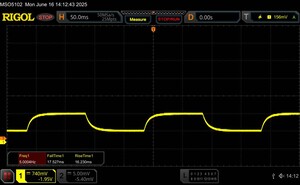
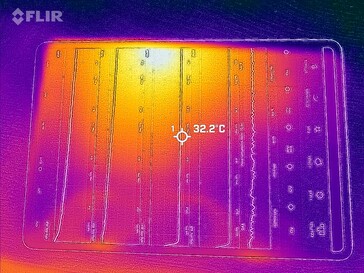

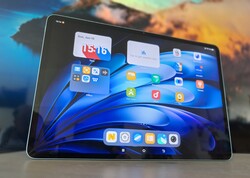
 Total Sustainability Score:
Total Sustainability Score: 








